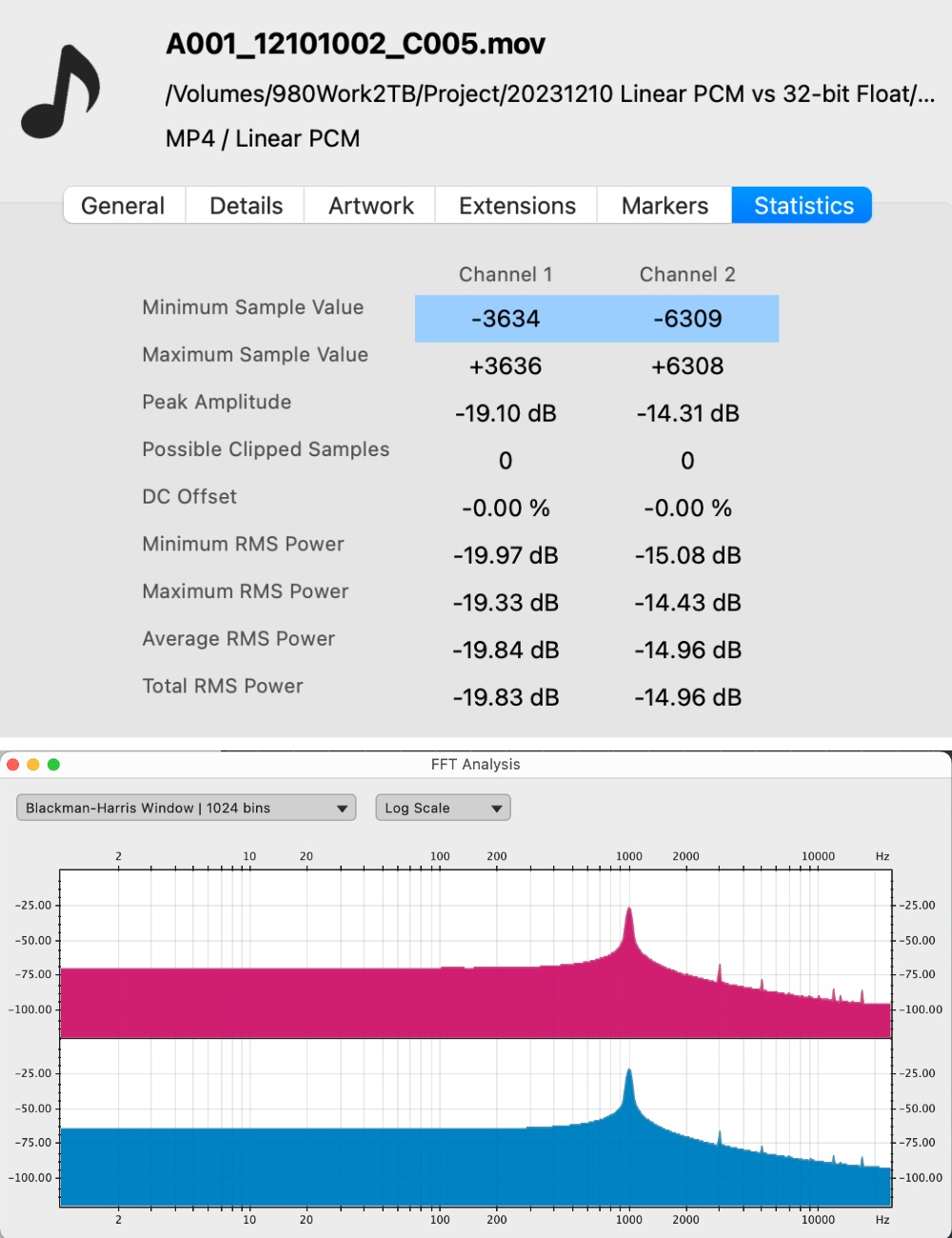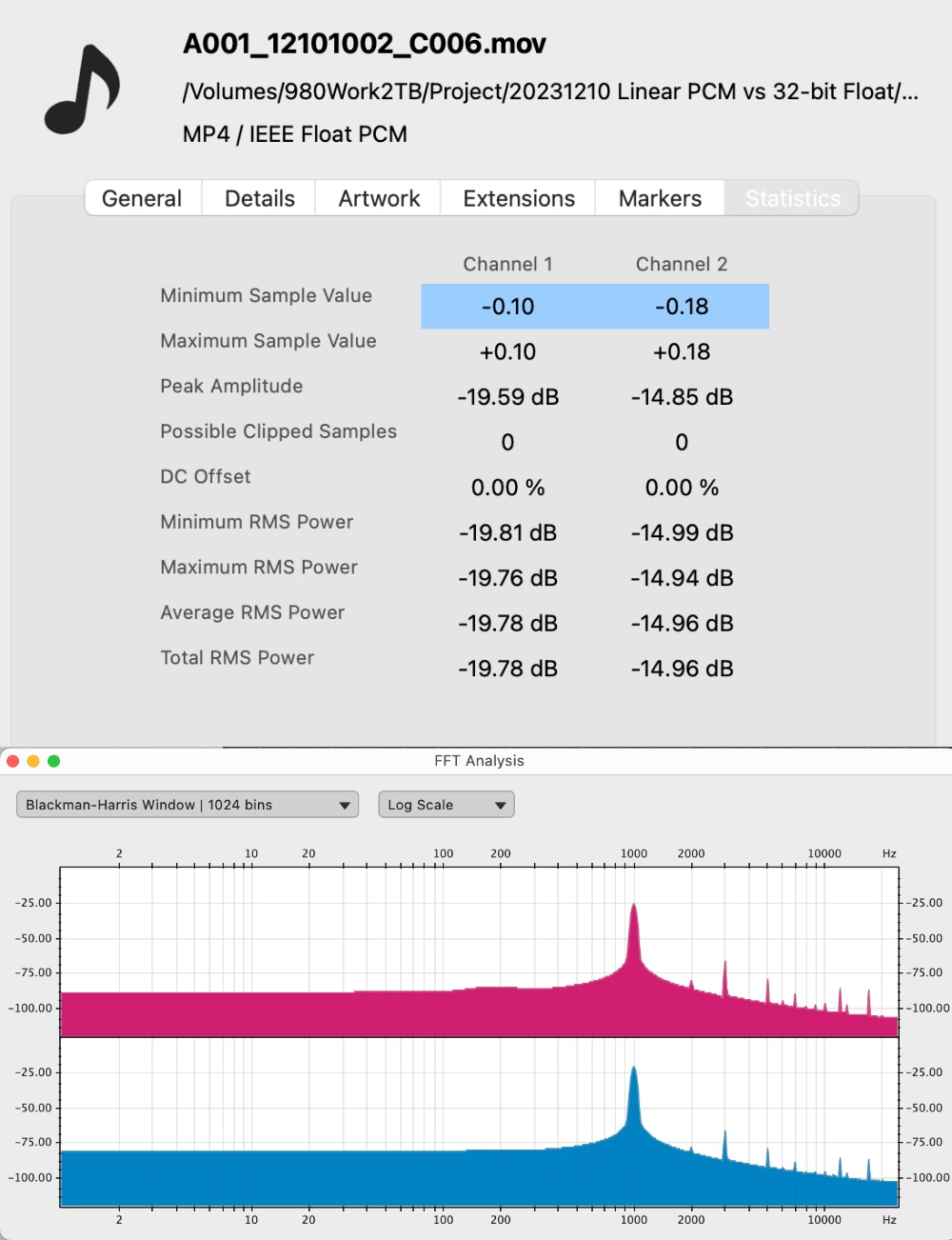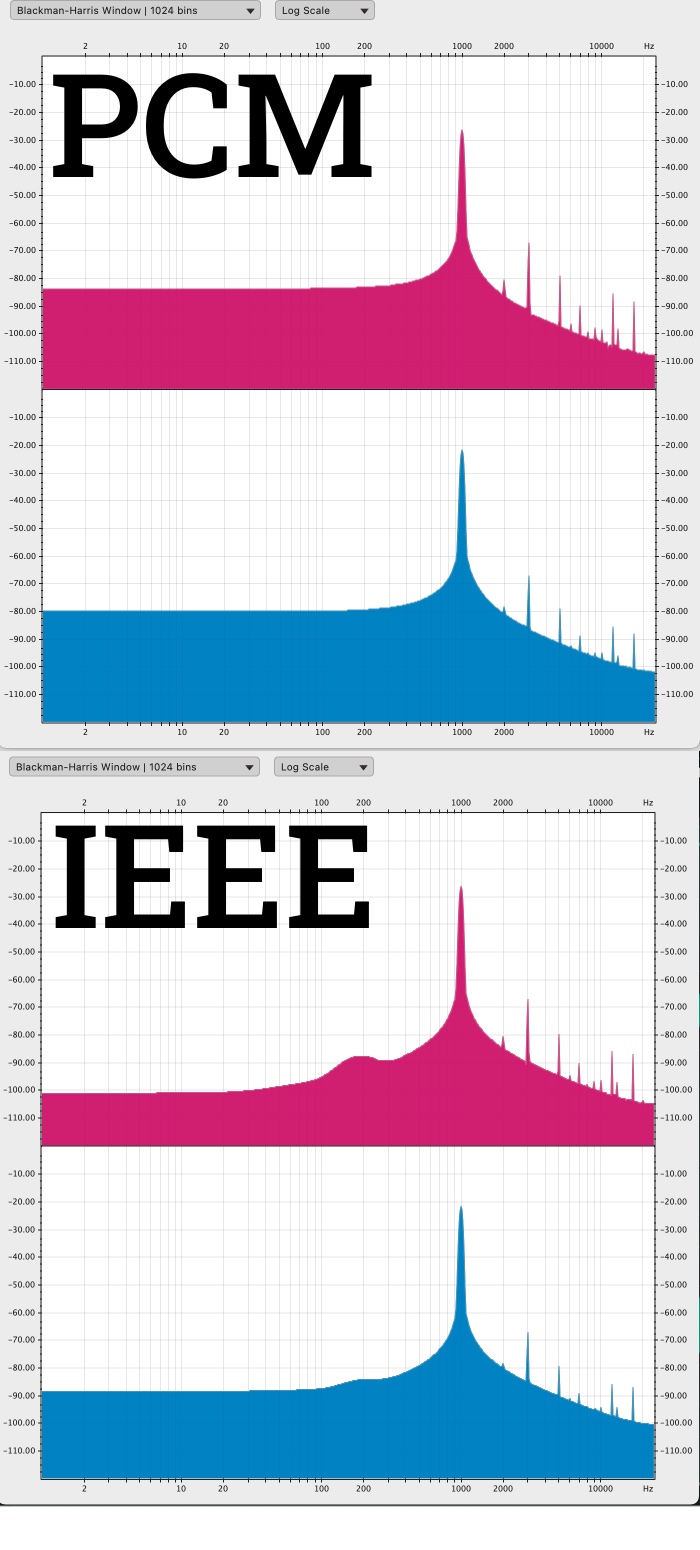PCM and Float audio differenceI decided to check, what happened, when I selected IEEE Float (32-bit) or Linear PCM (16-bit). Most interest is of course the behaviour of the internal microphones in the iPhone.
I mounted the iPhone horizontally in a SmallRig cage on a tripod, and recorded a few seconds ProRES 422HQ in both audio modes.
I decided to test 1kHz only initially. At varying distances from the iPhone. A small Sony Bluetooth speaker was placed at the “center of the lens (24mm)”, and this resulted in a clear difference in left and right levels at a distance around 10 cm (4 inches) compared to far larger distances (around 30cm (12 inches). Or thereabout. The peak at 1kHz governs the iPhone level setting.
Red is Channel 1 and Blue is Channel 2 in the FFT samples.

- Linear PCM statistics and FFT (large distance)
- PCM Distance FFT and STAT.jpg (207.68 KiB) Viewed 319193 times

- IEEE Float statistics and FFT (large distance)
- IEEE Distance FFT and STAT.jpg (206.12 KiB) Viewed 319193 times
Interestingly the recorded level was near identical (for both types), although the sound level was more than doubled. There is a significant “auto recording level adjustment” taking place in the iPhone, and it is clearly visible in noise levels too. Gain adjustment speed not tested.
In the FFT images, you can clearly see distortion levels (and slight differences), plus the significant difference in noise levels between IEEE Float and Linear PCM. Part of the distortion is from the speaker (naturally), so only the slight differences count.

- Short distance FFT for Linear PCM and IEEE Float
- FFT Short distance PCM and IEEE.jpg (227.58 KiB) Viewed 319193 times
I have made the scale larger for the short distance FFT samples, but even in the larger distance (hence lower sound pressure level at the microphones), there is a significant difference in noise level.
The test consisted of a single, 1kHz sine wave, at the same output volume. Neither speaker, nor iPhone was moved between measurements (at the same distance) and the feeder Sine Wave generator level was not altered between tests.
Since this was a very short and limited test scenario, I would not regard the results as authoritative. Only highly indicative for the actual differences in real life usage under the same circumstances.
Both FCPX (10.7) and DaVinci Resolve Studo (18.6.4) and earlier versions handle IEEE 32-bit floating point audio channels without hiccup, so… even for the internal microphones, there is a significant benefit (far lower noise) in using IEEE Float compared to Linear PCM in recordings.
Haven’t tested h265 or h264. Log should not be affected by this.
Regards and rem... ahem...
